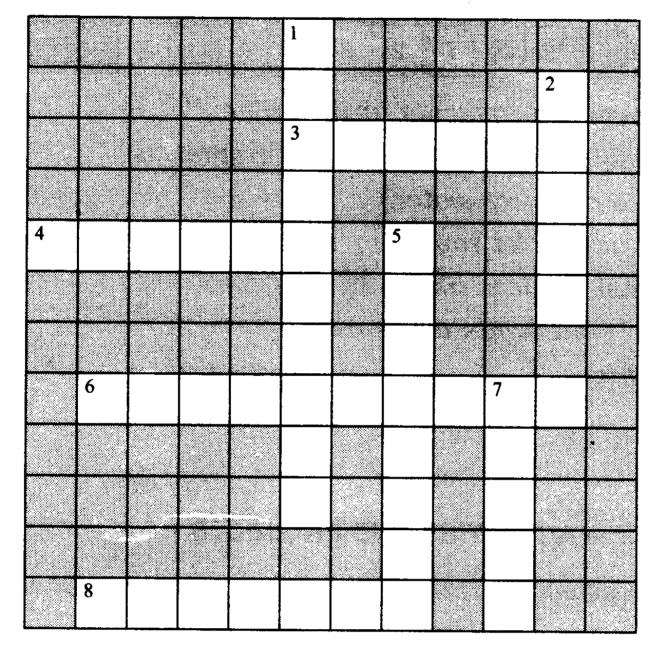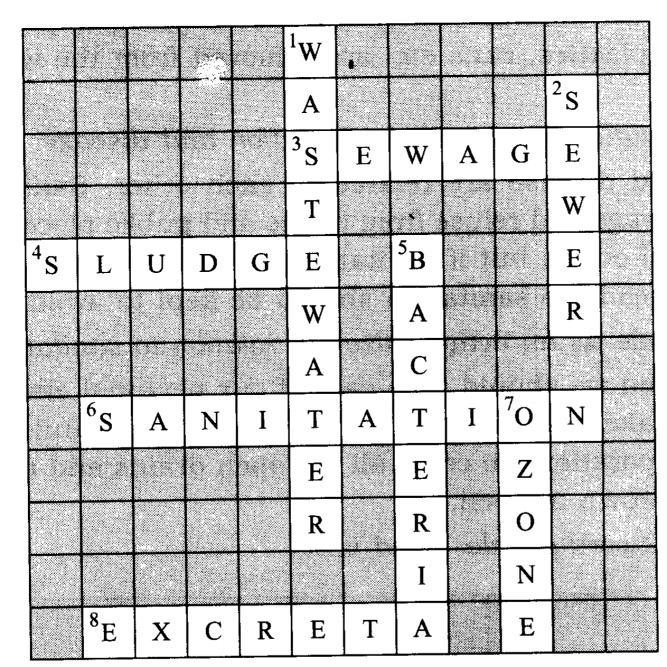Class 7 Science Chapter 18 Wastewater Story NCERT Solutions
Topics and Sub Topics in Class 7 Science Chapter 18 Wastewater Story:
| Section Name | Topic Name |
| 18 | Waste water Story |
| 18.1 | Water, our lifeline |
| 18.2 | What is sewage? |
| 18.3 | Water freshens up — an eventful journey |
| 18.4 | Wastewater treatment plant (wwtp) |
| 18.5 | Better housekeeping practices |
| 18.6 | Sanitation and disease |
| 18.7 | Alternative arrangement for sewage disposal |
| 18.8 | Sanitation at public places |
Q.1. Fill in the blanks:
(a) Cleaning of water is process of removing __________
(b) Wastewater released by houses is called __________.
(c) Dried __________ is used as manure.
(d) Drains get blocked by __________ and __________.
Ans.(a) pollutants (b) sewage (c) sludge (d) (d) chemicals, kitchen waste
Q.2. What is sewage? Explain why it is harmful to discharge untreated sewage into rivers or seas.
Ans. Sewage is a liquid containing wastes which is disposed by households, industrial and agricultural activities in water. It is harmful to discharge untreated sewage into rivers or seas because it can pollute the whole sources of water. Sewage contains harmful substances and disease causing organisms. It is therefore dangerous to release untreated sewage in water.
Q.3. Why should oils and fats be not released in the drain? Explain.
Ans. Oils and fats should not be released in drains because they harden the soil in the pipes and block them. Fats get clogged in holes of the soil in the drain and block it. It does not allow the water to flow.
Q.4. Describe the steps involved in getting clarified water from wastewater.
Ans. Following steps are involved in the purification of water:
(i) Firstly all the physical impurities like stones, plastic bags, cans etc. are to be removed. It is done by passing the water through bar screens.
(ii) Then water is taken to grit and sand removal tank where impurities are removed by sedimentation.
(iii) Solid impurities and feaces etc. are collected from bottom of water. These impurities collected are called sludge.
(iv) Clarified water is cleaned of other impurities by aerator. All disease causing bacteria are removed by chlorination.
Q.5. What is sludge? Explain how it is treated.
Ans. Sludge is the collected solid waste from the wastewater during the treatment in water treatment plant. Sludge is decomposed in a separate tank by the anaerobic bacteria. Activated sludge is used as manure.
Q.6. Untreated human excreta is a health hazard. Explain.
Ans. Untreated human excreta can cause a lot of health related problems. It pollutes water, air and soil. The polluted water contain disease causing bacteria which can spread epidemics like cholera, meningitis etc.
Q.7. Name two chemicals used to disinfect water.
Ans. Chlorine and ozone
Q.8. Explain the Junction of bar screens in a wastewater treatment plant.
Ans. Bar screens clear the wastewater of all the physical impurities. Large size waste like napkins, plastics, cans etc. are removed from the wastewater through the bar screens.
Q.9. Explain the relationship between sanitation and disease.
Ans. Sanitation and disease are related to each other. Sanitation involves proper disposal of sewage and refuse from hou&e and public places. If sanitation is there, no disease will occur, but if sanitation is not there various types of disease will occur and spread. So sanitation should be kept to avoid disease.
Q.10. Outline your role as an active citizen in relation to sanitation.
Ans. As active citizen we should take care of our personal environmental sanitation. We should make people aware of the benefits of sanitation. We should help municipal corporations to cover all the open drains and remove disease causing substances thrown in open.
Q.11.Here is a crossword puzzle. Good luck!
Across:
3. Liquid waste products
4. Solid waste extracted in sewage treatment
6. A word related to hygiene
8. Waste matter discharged from human body
Down:
1. Used water
2. A pipe carrying sewage
5. Micro-organisms which cause cholera
7. A chemical to disinfect water
Ans
Q.12. Study the following statements about ozone:
(a) It is essential for breathing of living organisms.
(b) It is used to disinfect water.
(c) It absorbs ultraviolet rays.
(d) Its proportion in air is about 3%.
Which of these statements are correct?
(i) (a), (b) and (c) (ii) (b) and (c) (iii) (a) and (d) (iv) All four
Ans. (ii) (b) and (c)
- Chapter 1 Nutrition in Plants
- Chapter 2 Nutrition in Animals
- Chapter 3 Fibre to Fabric
- Chapter 4 Heat
- Chapter 5 Acids, Bases and Salts
- Chapter 6 Physical and Chemical Changes
- Chapter 7 Weather, Climate and Adaptations of Animals to Climate
- Chapter 8 Winds, Storms and Cyclones
- Chapter 9 Soil
- Chapter 10 Respiration in Organisms
- Chapter 11 Transportation in Animals and Plants
- Chapter 12 Reproduction in Plants
- Chapter 13 Motion and Time
- Chapter 14 Electric Current and Its Effects
- Chapter 15 Light
- Chapter 16 Water: A Precious Resource
- Chapter 17 Forests: Our Lifeline
- Chapter 18 Wastewater Story
.png)
.png)